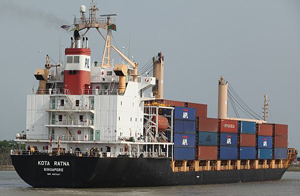In the TTIP negotiations, the U.S. and EU should consider exchanging comprehensive coverage of procurement of their central government entities. The negotiations of the Transatlantic Trade and Investment Partnership (TTIP) provide an opportunity for the

Summary
The Trans-Pacific Partnership (TPP) is akin to other free trade agreements (FTAs) that the United States (US) has negotiated over the past two decades that are aimed at opening markets and providing new opportunities for USÂ goods, services, and firms.
The TPP is the first FTA to be negotiated by the Obama Administration.
Update on TPP and New FTA Negotiations Initiated by the Obama Administration The countries engaged in the negotiations of TPP have expanded to a group of 12 with the addition of Japan. They now represent nearly 40 percent of global GDP and a third of global trade.  While the parties made substantial progress on the negotiations in 2013, they were unable to complete them as hoped. No date has been set for finalizing the agreement. The Obama Administration has initiated negotiations of a second comprehensive FTA  -- the Transatlantic Trade and Investment Partnership (TTIP) with the European Union (EU). A successful negotiation of the TTIP with the EU and its 28 member states would more than double the number of countries subject to FTAs with the U.S. Currently, the U.S. has 14 FTAs that cover 20 countries (Australia, Bahrain, Canada, Chile, Colombia, Costa Rica, the Dominican Republic, El Salvador, Guatemala, Honduras, Israel, Jordan, Mexico, Morocco, Nicaragua, Republic of Korea, Oman, Panama, Peru and Singapore). Read More This posting by Jean Heilman Grier was first published in Asia Pathways, a blog of the Asia Development Bank Institute, on May 31, 2013.Summary The Trans-Pacific Partnership (TPP) is akin to other free trade agreements (FTAs) that the United States (US) has negotiated over the past two decades that are aimed at opening markets and providing new opportunities for US goods, services, and
The U.S. and the EU should exchange coverage of build-operate-transfer contracts and works concessions in the TTIP. In the negotiations of the Transatlantic Trade and Investment Partnership (TTIP), the United States and the European Union (EU) should aim
The U.S. lacks the mechanism for comprehensive sub-federal coverage in TTIP. As noted in an earlier posting, one of top priorities of the European Union’s (EU) in the U.S.-EU Transatlantic Trade and Investment Partnership (TTIP) negotiations is expansion
EU business seeks removal of “buy America” requirements in TTIP negotiations. BUSINESSEUROPE, a leading business organization in the European Union (EU), cited removal of U.S. domestic preferences as one of its primary goals in the procurement
The TTIP Procurement Chapter should incorporate strong anti-corruption provisions. A new European Commission report, which examined corruption in the European Union (EU), concluded that public procurement in the Member States is particularly prone to
Despite a common interest in expanded access to procurement in the TTIP negotiations, the EU has identified more specific objectives. The United States and the European Union (EU) began negotiations of the Transatlantic Trade and Investment Partnership (TTIP)
The current U.S. and EU commitments on government procurement will be the basis for the procurement negotiations in the Transatlantic Trade and Investment Partnership. In July 2013, the United States and the European Union (EU) commenced negotiations of the